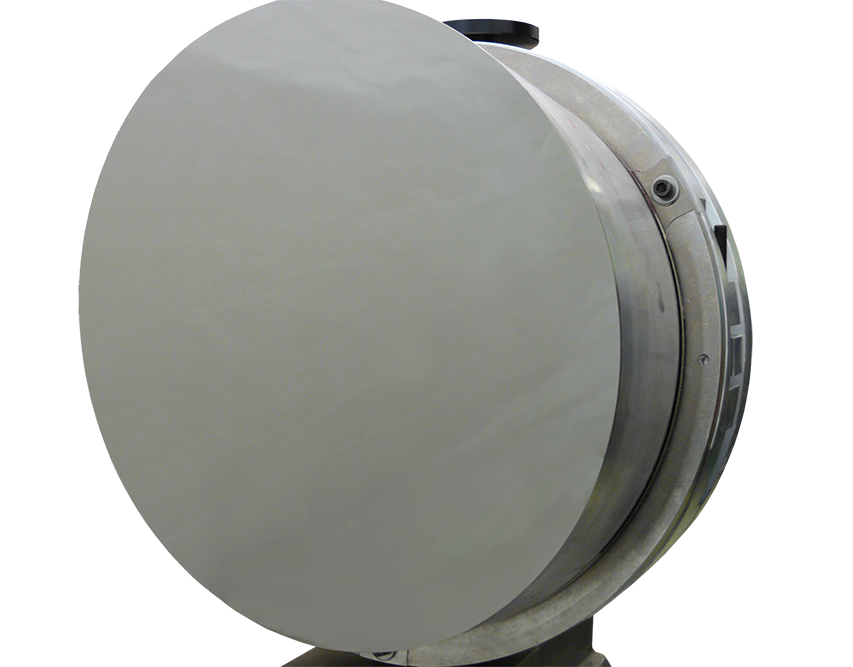Off-axis aspheric and parabolic mirrors (OAPs) are useful for collimating or focusing a light path when one must avoid interfering with or obscuring the incoming beam. Many optical systems use this simple approach to minimize their footprint as the light path can be folded while maintaining beam integrity. Inrad Optics has perfected the production of light-weighted metal mirrors made from aluminum, beryllium, and a variety of metal matrix materials.
Evolving technical requirements: Off-axis aspheric mirrors are commonly used for reflective imaging telescopes, high power laser focusing elements and bore sight alignment modules. These applications push the limits of size, smoothness and accuracy of off-axis aspheric mirrors.
- Larger: New optical designs are driving a need for larger diameters with further off-axis focal points. Inrad Optics readily produces mirrors to 18 inches in diameter with off-axis distances as far as 12 inches or more. Large mirrors can easily be light-weighted by machining honeycombed structures or pockets on the backside.

- Smoother Surfaces: Off-axis aspheric mirrors used in hyperspectral and multispectral imaging applications require high performance across a wide range of wavelengths. For short wavelengths the mirrors must be polished to a very smooth finish to minimize light scatter. Our typical process achieves surface roughness of 20Å RMS or less.
- Accuracy: As detector resolutions continue to improve the accuracy of mirror surfaces become ever more critical. Using an in-situ polishing process, Inrad Optics is generates extremely precise surfaces as this technique provides real time feedback to the operator to ensure the figure accuracy is optimized.
Manufacturing challenges: Because off-axis aspheric mirrors serve in high precision imaging applications for aerospace and defense, they have stringent quality requirements. The keys to delivering quality are:
- End-to-end manufacturing: By managing all aspects of the fabrication process we can predict the performance of these complex mirrors. Our operations for machining, thermal cycling, plating, polishing, and thin film coating of off-axis aspheric mirrors are entirely in-house, so we can better control and coordinate processes and ensure a high quality product.
- Testing: We have extensive experience testing complex off-axis mirrors using several proven methods. For more complex aspheres or long focal length aspheres, a computer-generated hologram (CGH) can be used to quickly and accurately measure the surface shape by mimicking a perfect surface within the interferometer image. For less complex shapes a null lens, Hindle sphere, or simple ball test may be used.
- Operational stability: Since many systems operate in environmental conditions the fabrication process must involve stabilizing the mirrors to avoid distortions in operation. Our thermal processes and low stress plating techniques ensure predicted performance. We also have the required equipment to optically inspect at temperature extremes.